Related Research Articles
The National Association of Professional Base Ball Players (NAPBBP), often known simply as the National Association (NA), was the first fully-professional sports league in baseball. The NA was founded in 1871 and continued through the 1875 season. It succeeded and incorporated several professional clubs from the previous National Association of Base Ball Players (NABBP) of 1857–1870, sometimes called "the amateur Association". In turn, several NA clubs created the succeeding National League of Professional Baseball Clubs, which joined with the American League of Professional Base Ball Clubs to form Major League Baseball (MLB) in 1903.
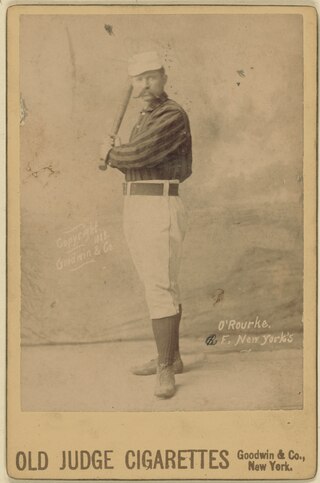
James Henry O'Rourke, nicknamed "Orator Jim", was an American professional baseball player in the National Association and Major League Baseball who played primarily as a left fielder. For the period 1876–1892, he ranks behind only Cap Anson in career major league games played (1,644), hits (2,146), at-bats (6,884), doubles (392) and total bases (2,936), and behind only Harry Stovey in runs scored (1,370).
The Cincinnati Red Stockings of 1869 were baseball's first all-professional team, with ten salaried players. The Cincinnati Base Ball Club formed in 1866 and fielded competitive teams in the National Association of Base Ball Players (NABBP) 1867–1870, a time of a transition that ambitious Cincinnati businessmen and English-born ballplayer Harry Wright shaped as much as anyone. Major League Baseball recognized those events officially by sponsoring a centennial of professional baseball in 1969.
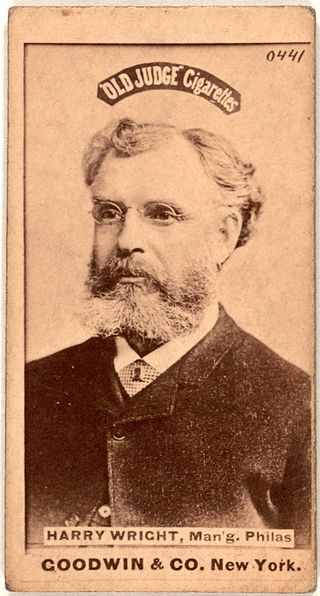
William Henry "Harry" Wright was an English-born professional baseball player, manager, and developer. He assembled, managed, and played center field for baseball's first fully professional team, the 1869 Cincinnati Red Stockings. He is credited with introducing innovations such as backing up infield plays from the outfield and shifting defensive alignments based on hitters' tendencies. For his contributions as a manager and developer of the game, he was inducted into the Baseball Hall of Fame in 1953 by the Veterans Committee. Wright was also the first to make baseball into a business by paying his players up to seven times the pay of the average working man.
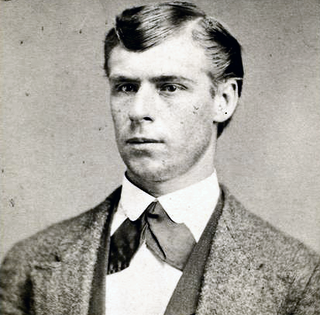
Douglas L. Allison was an American Major League Baseball player. He began his career as a catcher for the original Cincinnati Red Stockings, the first fully professional baseball team. Allison was one of the first catchers to stand directly behind the batter, as a means to prevent baserunners from stealing bases. He was considered a specialist, at a time when some of the better batsmen who manned the position normally rested, or substituted at other fielding positions. Allison became the earliest known player to use a type of baseball glove when he donned buckskin mittens to protect his hands in 1870.
The Hartfords were a 19th-century baseball team. The team was based in Hartford, Connecticut.

Calvin Alexander McVey was an American professional baseball player during the 1860s and 1870s. McVey's importance to the game stems from his play on two of the earliest professional baseball teams, the original Cincinnati Red Stockings and the National Association Boston Red Stockings. He also played on the inaugural National League pennant-winning team, the 1876 Chicago White Stockings.
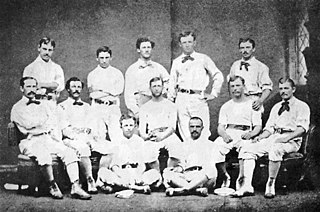
The Athletic Base Ball Club of Philadelphia was a prominent National Association, and later National League, professional baseball team that played in the second half of the 19th century.

The Atlantic Base Ball Club of Brooklyn was baseball's first champion and its first dynasty. The team was also the first baseball club to visit the White House in 1865 at the invitation of President Andrew Johnson.
The Capitoline Grounds, also known as Capitoline Skating Lake and Base Ball Ground, was a baseball park located in Brooklyn, New York, from 1864 to 1880. It was built to rival nearby Union Grounds, also in Brooklyn. The park hosted local amateur teams in its early history, but later hosted professional and semi-professional games. The park's only season as the home field for an all-professional team occurred in 1872 when the Brooklyn Atlantics joined the National Association of Professional Base Ball Players. The park was flooded during the winter and used as an ice skating park. The grounds were used by local high schools and colleges as well, to play American football games, and ice rink football matches.
The following are the baseball events of the year 1881 throughout the world.
The following are the baseball events of the year 1872 throughout the world.
The following are the baseball events of the years 1845 to 1868 throughout the world.

Asahel "Asa" Brainard, nicknamed "Count", was the ace pitcher of the original Cincinnati Red Stockings, the first fully professional baseball team, after having pitched for the Excelsior club of Brooklyn, New York.
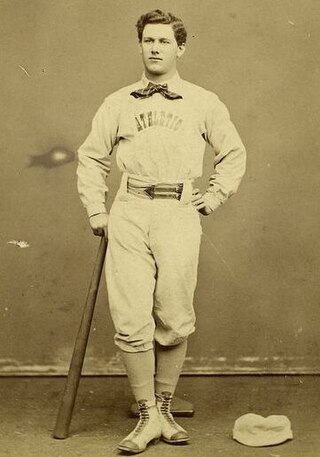
Timothy Hayes Murnane was an American sportswriter specializing in baseball, regarded as the leading baseball writer at The Boston Globe for about 30 years until his death. At the same time, he organized and led professional sports leagues and helped govern the baseball industry. He had been a professional baseball player, and played several seasons in the major leagues as a first baseman and center fielder.

Charles James Sweasy, born Swasey, played second base for the original Cincinnati Red Stockings, the first fully professional baseball team. He returned to Cincinnati in 1876, hired by the new club that was a charter member of the National League. In the meantime he played for six teams during the five seasons of the National Association, so he may be considered one of the first "journeyman" ballplayers. A right-handed thrower and batter, he almost exclusively played second base.
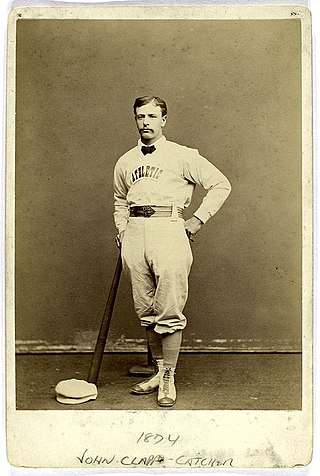
John Edgar Clapp, nicknamed "Honest John", was a professional baseball player-manager whose career spanned 12 seasons, 11 of which were spent with the Major League Baseball (MLB) Middletown Mansfields (1872), Philadelphia Athletics (1873–75), St. Louis Brown Stockings (1876–77), Indianapolis Blues (1878), Buffalo Bisons (1879), Cincinnati Stars (1880), Cleveland Blues (1881), and New York Gothams (1883). Clapp, who predominately played as a catcher, also played as an outfielder. Over his career, Clapp compiled a career batting average of .283 with 459 runs scored, 713 hits, 92 doubles, 35 triples, 7 home runs, and 834 runs batted in (RBI). Over 1,188 games played, Clapp struck out 51 times. Although the majority of his career was spent in the major leagues, Clapp also played two seasons of minor league baseball. He made his MLB debut at the age of 21 and was listed as standing 5 feet 7 inches (170 cm) and weighing 194 pounds (88 kg). His brother, Aaron Clapp, also played one season of MLB for the Troy Trojans.
Clytus George "Cy" Bentley was an American Major League Baseball pitcher who played one season in professional baseball, for the 1872 Middletown Mansfields of the National Association.
References
- Wright, Marshall (2000). The National Association of Base Ball Players, 1857–1870. Jefferson, NC: McFarland & Co. ISBN 0-7864-0779-4
- Arcidiacono, David (2009) "Major League Baseball in Gilded Age Connecticut: The Rise and Fall of the Middletown, New Haven and Hartford Clubs". McFarland & Co. ISBN 0-7864-3677-8